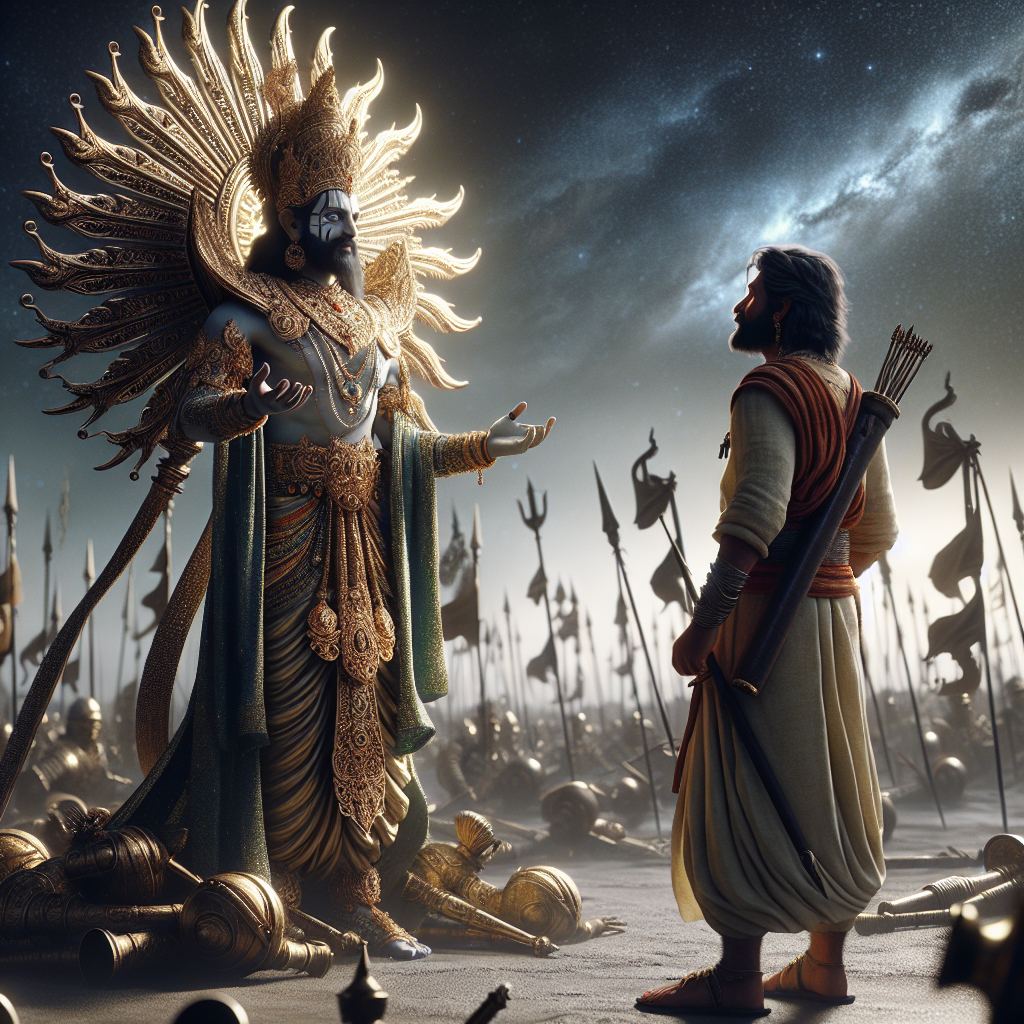Imagine having a cosmic Zoom call where you're on with none other than a deity dropping wisdom about life’s existential dilemmas. That's essentially what 'God Talks with Arjuna: The Bhagavad Gita' brings to the table—a dialogue between Prince Arjuna and Lord Krishna, which unfolds in the spur of a battlefield around 5000 years ago. Written in the Indian subcontinent, the Gita narrates this intense heart-to-heart as Arjuna wrestles with a morally troubling predicament right before a crucial war. Krishna, acting as his charioteer, not only drives Arjuna’s chariot but also guides him through dense philosophical and spiritual territories.
On one hand, the Gita fits into a world where duty and righteousness reign supreme. Arjuna, caught in the clutches of doubt and moral confusion, gets a backstage pass to understanding profound concepts like karma and dharma. Here, Krishna serves not just as a divine mentor but as a reminder that the battles we fight aren’t merely external. The internal conflicts, the mini-wars in our minds, are just as monumental.
You might wonder why this ancient text is relevant to Gen Z, juggling social media blitzes and AI overlords. The Gita, though born in antiquity, grapples with themes that resonate universally—identity, duty, and the pursuit of meaning. In conversations about hustling and grinding, Krishna’s insights add a spiritual twist, inviting you to explore deeper questions about purpose beyond productivity metrics.
While some may see the Gita as a religious relic, tied to Hindu tradition, others embrace it for its philosophical heft. In a world where spiritual narratives often bring both comfort and controversy, the Gita stands out for its inquiry into human nature. It’s here that Krishna demystifies life’s chaos, advising detachment and focus even amidst turmoil. He pushes Arjuna towards self-realization and balance, affirming that life’s messiness doesn’t negate our capacity for centeredness.
Critics say the Gita’s promotion of duty over emotion might seem cold or even dangerous in particular contexts. The idea of surrendering personal desires in the name of duty might feel jarring. Skeptics argue that such texts have historically been manipulated to justify war or oppressive systems. Yet, the Gita encourages deeper introspection, allowing readers to grapple with these contradictions rather than bypassing them.
Politically, the dialogue between Krishna and Arjuna can stir various interpretations. Some view it as propaganda for the acceptance of one’s station in life, urging compliance within social structures like caste. It can be perceived as reinforcing a system that can restrict upward mobility and perpetuate inequality. But it's also about an exploration of personal dharma, encouraging an individual journey within those confines. For those who truly engage with it, the Gita offers insights into how we might reconcile our personal desires with our social responsibilities.
For Generation Z, raised in a maze of complex challenges and opportunities, the Bhagavad Gita can offer perspectives that blend ancient wisdom with contemporary life. Amid constant notifications and a growing sense of urgency, Krishna's call for mindfulness and conscious living echoes loudly.
Like Arjuna, many find themselves at crossroads where choices are tangled and moral compasses quiver uncertainly. The Gita offers a framework not to prescribe what to think but to encourage how to think about one’s actions and choices. It urges us to appreciate the journey, to find peace amid chaos, and to recognize the power in surrendering to the moment.
No doubt, the text is multilayered—embracing faith, ethics, psychology, and metaphysics. Yet, its core message for you might be simpler: stay true, stay present, and remember that even in complexity, there’s clarity to be found. The Gita invites you to a dialogue, not as an antique artifact, but as an all-weather guide, nudging you toward self-discovery.

